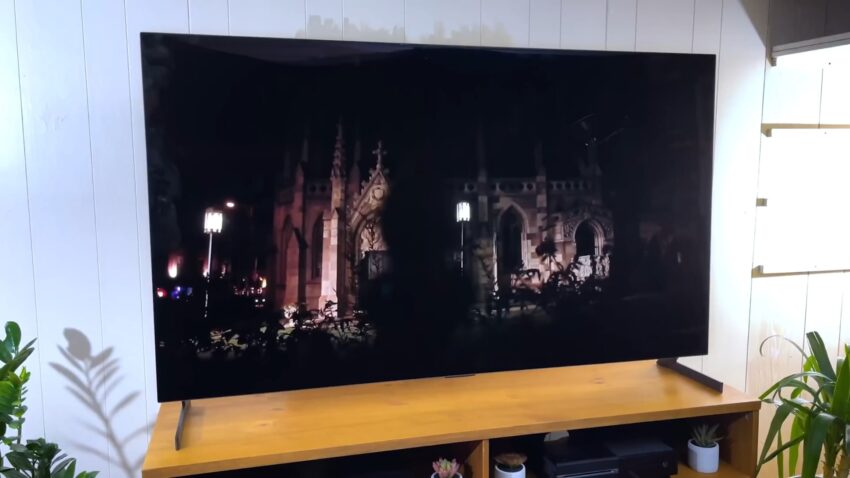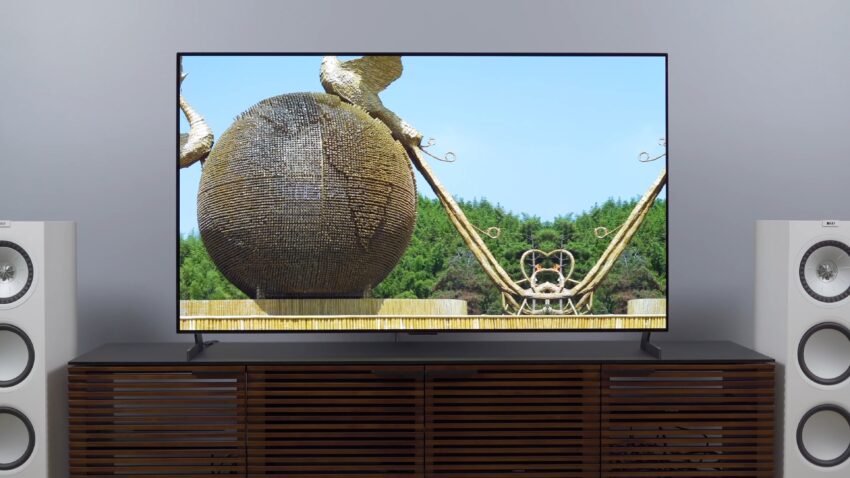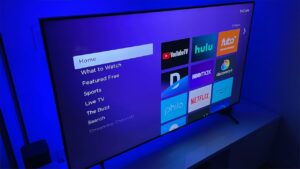4K resolution, also known as Ultra High Definition, is the latest screen technology to enter the market. It has a higher resolution than the 1080p screen which most TVs have had for years. But is your next buy worth 4K? We’re here to help you make your decision. Check out our overview of 4K vs 1080p.
The advantage of 4k/UHD over 1080p is – 4k has four times as many pixels as 1080p, which implies it to have a more clear picture – yet a UHD TV possibly improves the image quality if:
- You are watching local content
- You sit close enough to notice the difference
A 4k UHD TV doesn’t improve the image quality of lower quality substances like 1080p Blu-beams.
Only budget TVs or Small TVs with 1080p resolution are still being produced. And even if you don’t care about 4k (for example, if you’re sitting far away or you don’t have access to 4k content), you’ll still have to buy a 4k TV if you want the higher-end TV picture quality.
4k TV
What it is: A TV with 2160 rows and 3840 columns of pixels.
Who should buy it: Most people buying TVs today, the people who like to see 4K content.
1080p TV
What it is: A TV with 1080 rows and 1920 columns of pixels.
Who should buy it: If you sit far, have a small screen, and if you’re only looking for a budget TV.
| 4k | 1080p | |
| Sizes available | Great | Great in the past, limited today |
| Height in pixels | 2160 | 1080 |
| Width in pixels | 3840 | 1920 |
| Availability | Great | Limited |
| Content Availability | Average, but growing fast | Excellent |
| TV Sizes Available | 40″ to 100″+ | 32″ to 55″ |
Native 4k vs 1080p
The above two images show an identical image at different native resolutions, which means that the resolution of the content and the resolution of the TV are exactly the same. The first photo is shown as a 1080p image, and the second shows a 4K image.
The 4k image is smoother than the 1080p image and has more detail. Look closely and you will see that, in the 1080p image, the edges around objects are noticeably rougher. The difference is because a 4k screen’s higher pixel count makes a more realistic representation of the image, with clearer outlines for distinct objects and more depth to the image.
When you are underwhelmed by the difference, that is because, at higher resolutions, there are diminishing returns. You get more detail with 4k than with 1080p but the upgrade isn’t as spectacular as the one between SD and HD.
It is important to note that this comparison makes use of a true image. 4k video is becoming more common, but much of what you’re seeing is likely lower-resolution video upscaled to UHD, which looks different from native and 1080p content.
Winner: 4k.
HDR
HDR is another form for transmitting video types to TVs that improves the dynamic scope of substance and permits them to utilize a more extensive scope of hues. This has a serious effect on picture quality when it is progressed admirably, making content look significantly more life-like.
While it isn’t a necessity for HDR support, we’ve yet to see a 1080p TV with HDR support. Along these lines, in case you’re interested in moving up to HDR, 4k UHD is the main alternative.
Winner: 4k.
Viewing Distance
Having a 4k TV and genuine 4k content isn’t sufficient. There are cutoff points to what the eye can see, so on the off chance that you sit excessively far from your TV (the separation relying upon the TV’s size), you won’t have the option to see all the detail in the picture. That means that if you sit too far away from a 4k TV, the picture will look like what you’d get on a TV with a lower resolution screen.
Winner: 4k
Is It Worth It?
No matter what the science says, technology firms will continue to churn out 4 K TV sets. Samsung and Sony are currently now in the market with 8 K set out. However, this rapid progress in screen technology is not enough to excuse to drop 1080p and only get in the 4 K bandwagon. TV sets will cost from a couple of hundred dollars up to several thousand dollars everywhere right now. A fast searching on Amazon will give you options from just over $200 to over $10,000.
However, most TVs come with screens within 40 to 60 inches. In other words, as we have discussed previously, there is no way that you will perceive the pixel variation on these 4K units compared to 1080p ones. And if this is the case, it makes more sense to stick with 1080p TVs, as they are so much more affordable.
While there are loads of titles on Netflix that come in 4 K, it can be difficult to watch them because of their huge file size. Netflix recommends that you have a 25mbps internet connection to access the Ultra HD content. And if you find these 4 K sets’ smart TV functionality, there’s not much different from those 1080p. In other words, you’ll end up paying much more per pixel per inch difference just you will probably not notice.
But keep in mind that there is no stopping the tide of entertainment technology. Sooner or later, all TV sets will sport 4K and 8K screens. With that said, we suggest waiting until larger screens become the standard. That way, you will be able to enjoy a 4K resolution screen better. At this point in time, stick to your trusty 1080p; wait for 4K content, prices, and screen sizes to offer you better value for your money.
Upscaling and Image Quality
Upscaling technology plays a crucial role in enhancing the image quality of lower-resolution content when viewed on a 4K TV. As TVs have a much higher pixel count compared to 1080p or lower resolution content, upscaling algorithms are employed to upscale the lower resolution content to fit the higher resolution screen.
Upscaling algorithms work by analyzing the existing pixels in the lower-resolution content and using complex mathematical calculations to generate additional pixels to fill in the gaps. These newly generated pixels are designed to match the surrounding pixels and maintain the overall integrity of the image.
The effectiveness of upscaling technology can vary depending on the quality of the algorithm used and the processing power of the TV. Higher-end TVs often employ advanced upscaling algorithms that are capable of producing more accurate and detailed results.
When properly implemented, upscaling can significantly improve the perceived image quality of lower-resolution content on a TV. It can enhance the sharpness and clarity of the image, reduce pixelation and artifacts, and provide a more immersive viewing experience.
FAQ
Can a 4K TV improve the image quality of lower-resolution content?
Yes, 4K TVs employ upscaling technology to enhance the image quality of lower-resolution content. Upscaling algorithms analyze the existing pixels and generate additional ones to fill in the gaps, resulting in improved sharpness and clarity. However, the effectiveness of upscaling can vary depending on the TV’s quality and processing power.
Are 1080p TVs still being produced?
While most TVs being produced today are 4K, budget or smaller-sized TVs may still be available with 1080p resolution. However, premium features are typically not found on lower-resolution options.
Should I choose a 4K TV for gaming?
4K TVs offer benefits for gaming, such as low input lag, support for Variable Refresh Rate (VRR), and near-instant response time. These features contribute to a more responsive and immersive gaming experience. Additionally, HDR support is more commonly found on 4K TVs, enhancing the visual quality of compatible games.
What is HDR, and why is it relevant?
HDR (High Dynamic Range) is a video format that expands the dynamic range and color gamut, resulting in more vibrant and lifelike images. While 4K resolution is not a requirement for HDR support, most HDR content is available on 4K TVs. Therefore, if you’re interested in experiencing HDR, a 4K UHD TV is the recommended choice.
Is the viewing distance important when considering?
Yes, the viewing distance plays a crucial role in perceiving the benefits of 4K resolution. If you sit too far away from the TV, you may not notice the increased detail and clarity. It’s recommended to sit at an appropriate distance to fully appreciate the finer details offered by it.
Are there any other factors to consider when choosing between 4K and 1080p?
Apart from resolution, factors such as screen size, content availability, and budget should also be considered. Larger screen sizes tend to benefit more from higher resolutions, while content availability for 4K is growing rapidly. Additionally, they may come with a higher price tag compared to 1080p TVs.
Should I wait for larger screens and better prices before purchasing?
If you’re not in immediate need of a new TV and want to get better value for your money, waiting for larger screen sizes and more competitive pricing in the 4K market could be a good option. As technology advances, prices tend to decrease, and larger screen sizes become more affordable.
Conclusion:
If you’re shopping for a TV today, buying a 4k TV over a 1080p TV is worthwhile, provided you’re sitting close enough to see the extra detail and watching native UHD content. When you’re only watching the content of 1080p, or even lower resolution, it won’t give you a quality boost. If you already own a decent 1080p TV and don’t sit close enough to see the pixels, spending money isn’t worth it because you probably won’t benefit much from the upgrade unless you spend on fancy features like local dimming, OLED, and HDR.
And it is hard to find anything other than 4k TV nowadays. Generally, 1080p is reserved for inexpensive financial planning options and all the better TVs should have UHD resolution. Premium features are not found on lower resolutions anymore.
Related Posts:
- Curved VS Flat TVs 2024 Buying Guide - Is the Curve…
- LG SJ8500 LED TV 2024 Review - Best 4K TV For The Money
- Sony A8F TV 2024 - Best 4k OLED TV For The Money
- Samsung TU8000 2024 Review - Best 4K TV For The Money
- 15 Best Sceptre TVs 2024 - Do They Offer Good Value…
- LG C9 OLED TV 2024 Review - Best OLED TV For The Money











